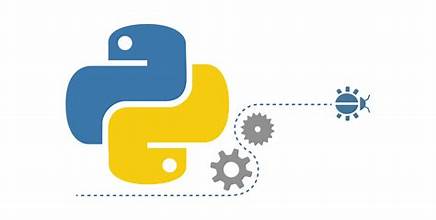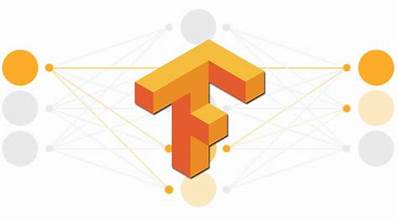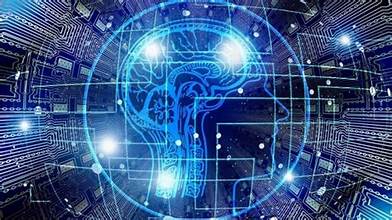Duration
21 hours (usually 3 days including breaks)
Requirements
- Experience with Swift programming
- Experience with mobile application development
- An iOS device running v12 or higher
Audience
- Developers
- Data scientists who wish to develop AI-enabled mobile applications on iOS
Overview
TensorFlow Lite is an open source deep learning framework for mobile devices and embedded systems.
This instructor-led, live training (online or onsite) is aimed at developers who wish to use TensorFlow Lite to develop iOS mobile applications with deep learning capabilities.
By the end of this training, participants will be able to:
- Install and configure TensorFlow Lite.
- Understand the principles behind TensorFlow and machine learning on mobile devices.
- Load TensorFlow Models onto an iOS device.
- Run an iOS application capable of detecting and classifying an object captured through the device’s camera.
Format of the Course
- Interactive lecture and discussion.
- Lots of exercises and practice.
- Hands-on implementation in a live-lab environment.
Course Customization Options
- To request a customized training for this course, please contact us to arrange.
Course Outline
Introduction
- Tensorflow vs Tensorflow Lite
Overview of TensorFlow Lite Features and Workflow
- Recap of machine learning and deep learning concepts
- How on-device low-latency inference is achieved
- End-to-end model building and deployment
Preparing the Development Environment
- Starting a Swift project
- Adding TensorFlow to the project
Capturing an Image with a Device Camera
- How camera input is captured
- Overview of classes and methods
- Running inference on a frame (performing image classification)
Creating an App for Object Detection
- Selecting a TensorFlow Model
- Converting the TensorFlow Model
- Loading the TensorFlow Model onto a Mobile Device
- Loading a Pre-trained TensorFlow Model
Creating an App for Image Classification
- Selecting a TensorFlow Model
- Converting the TensorFlow Model
- Loading the TensorFlow Model onto a Mobile Device
- Loading a Pre-trained TensorFlow Model
Customizing the Model and Data
- Pre-processing a dataset
- Setting the hyperparameters
Optimizing the TensorFlow Model
- Measuring performance against a benchmark
- Measuring accuracy
- Retraining a TensorFlow model
Exploring Alternative Models
- Choosing a different model
- Training a model to recognize new classes (transfer learning)
- Obtaining training images for new labels
Deploying the AI Enabled iOS App
- Performing image classification in the field
Troubleshooting
Summary and Conclusion
Duration
21 hours (usually 3 days including breaks)
Requirements
- C or C++ programming experience
- A basic understanding of Python
- A general understanding of embedded systems
Audience
- Developers
- Programmers
- Data scientists with an interest in embedded systems development
Overview
TensorFlow Lite for Microcontrollers is a port of TensorFlow Lite designed to run machine learning models on microcontrollers and other devices with limited memory.
This instructor-led, live training (online or onsite) is aimed at engineers who wish to write, load and run machine learning models on very small embedded devices.
By the end of this training, participants will be able to:
- Install TensorFlow Lite.
- Load machine learning models onto an embedded device to enable it to detect speech, classify images, etc.
- Add AI to hardware devices without relying on network connectivity.
Format of the Course
- Interactive lecture and discussion.
- Lots of exercises and practice.
- Hands-on implementation in a live-lab environment.
Course Customization Options
- To request a customized training for this course, please contact us to arrange.
Course Outline
Introduction
- Microcontroller vs Microprocessor
- Microcontrollers designed for machine learning tasks
Overview of TensorFlow Lite Features
- On-device machine learning inference
- Solving network latency
- Solving power constraints
- Preserving privacy
Constraints of a Microcontroller
- Energy consumption and size
- Processing power, memory, and storage
- Limited operations
Getting Started
- Preparing the development environment
- Running a simple Hello World on the Microcontroller
Creating an Audio Detection System
- Obtaining a TensorFlow Model
- Converting the Model to a TensorFlow Lite FlatBuffer
Serializing the Code
- Converting the FlatBuffer to a C byte array
Working with Microcontroller’ss C++ Libraries
- Coding the microcontroller
- Collecting data
- Running inference on the controller
Verifying the Results
- Running a unit test to see the end-to-end workflow
Creating an Image Detection System
- Classifying physical objects from image data
- Creating TensorFlow model from scratch
Deploying an AI-enabled Device
- Running inference on a microcontroller in the field
Troubleshooting
Summary and Conclusion
Duration
21 hours (usually 3 days including breaks)
Requirements
- An understanding of deep learning concepts
- Python programming experience
- A device running embedded Linux (Raspberry Pi, Coral device, etc.)
Audience
- Developers
- Data scientists with an interest in embedded systems
Overview
TensorFlow Lite is an open source deep learning framework for executing models on mobile and embedded devices with limited compute and memory resources.
This instructor-led, live training (online or onsite) is aimed at developers who wish to use TensorFlow Lite to deploy deep learning models on embedded devices.
By the end of this training, participants will be able to:
- Install and configure Tensorflow Lite on an embedded device.
- Understand the concepts and components underlying TensorFlow Lite.
- Convert existing machine learning models to TensorFlow Lite format for execution on embedded devices.
- Work within the limitations of small devices and TensorFlow Lite, while learning how to expand their default capabilities.
- Deploy deep learning models on embedded devices running Linux to solve physical world problems such as recognizing images and voice, predicting patterns, and initiating movements and responses from robots and other embedded systems in the field.
Format of the Course
- Interactive lecture and discussion.
- Lots of exercises and practice.
- Hands-on implementation in a live-lab environment.
Course Customization Options
- To request a customized training for this course, please contact us to arrange.
Course Outline
Introduction
- TensforFlow Lite’s game changing role in embedded systems and IoT
Overview of TensorFlow Lite Features and Operations
- Addressing limited device resources
- Default and expanded operations
Setting up TensorFlow Lite
- Installing the TensorFlow Lite interpreter
- Installing other TensorFlow packages
- Working from the command line vs Python API
Choosing a Model to Run on a Device
- Overview of pre-trained models: image classification, object detection, smart reply, pose estimation, segmentation
- Choosing a model from TensorFlow Hub or other source
Customizing a Pre-trained Model
- How transfer learning works
- Retraining an image classification model
Converting a Model
- Understanding the TensorFlow Lite format (size, speed, optimizations, etc.)
- Converting a model to the TensorFlow Lite format
Running a Prediction Model
- Understanding how the model, interpreter, input data work together
- Calling the interpreter from a device
- Running data through the model to obtain predictions
Accelerating Model Operations
- Understanding on-board acceleration, GPUs, etc.
- Configuring Delegates to accelerate operations
Adding Model Operations
- Using TensorFlow Select to add operations to a model.
- Building a custom version of the interpreter
- Using Custom operators to write or port new operations
Optimizing the Model
- Understanding the balance of performance, model size, and accuracy
- Using the Model Optimization Toolkit to optimize the size and performance of a model
- Post-training quantization
Troubleshooting
Summary and Conclusion
Duration
21 hours (usually 3 days including breaks)
Requirements
- An understanding of DevOps concepts
- Machine learning development experience
- Python programming experience
Audience
- Data scientists
- ML engineers
- Operation engineers
Overview
TensorFlow Extended (TFX) is an end-to-end platform for deploying production ML pipelines.
This instructor-led, live training (online or onsite) is aimed at data scientists who wish to go from training a single ML model to deploying many ML models to production.
By the end of this training, participants will be able to:
- Install and configure TFX and supporting third-party tools.
- Use TFX to create and manage a complete ML production pipeline.
- Work with TFX components to carry out modeling, training, serving inference, and managing deployments.
- Deploy machine learning features to web applications, mobile applications, IoT devices and more.
Format of the Course
- Interactive lecture and discussion.
- Lots of exercises and practice.
- Hands-on implementation in a live-lab environment.
Course Customization Options
- To request a customized training for this course, please contact us to arrange.
Course Outline
Introduction
Setting up TensorFlow Extended (TFX)
Overview of TFX Features and Architecture
Understanding Pipelines and Components
Working with TFX Components
Ingesting Data
Validating Data
Tranforming a Data Set
Analyzing a Model
Feature Engineering
Training a Model
Orchestrating a TFX Pipeline
Managing Meta Data for ML Pipelines
Model Versioning with TensorFlow Serving
Deploying a Model to Production
Troubleshooting
Summary and Conclusion










